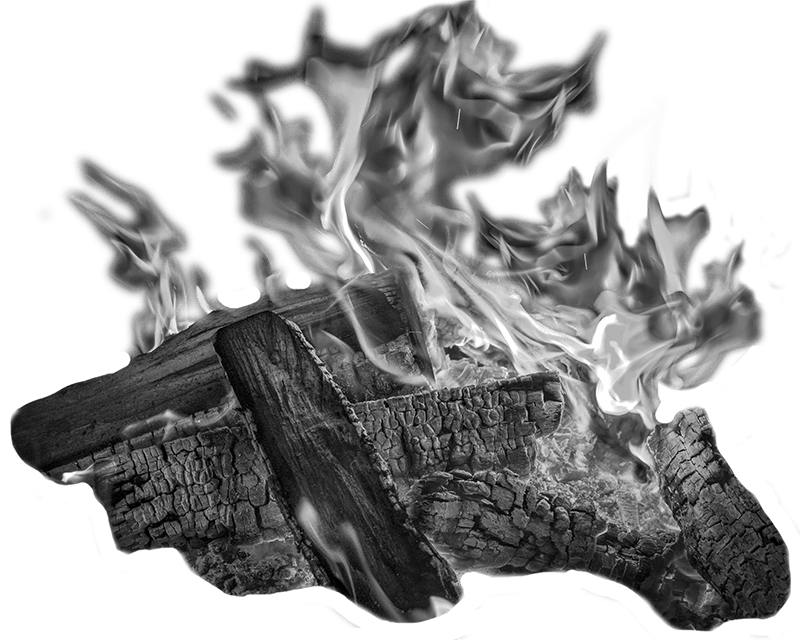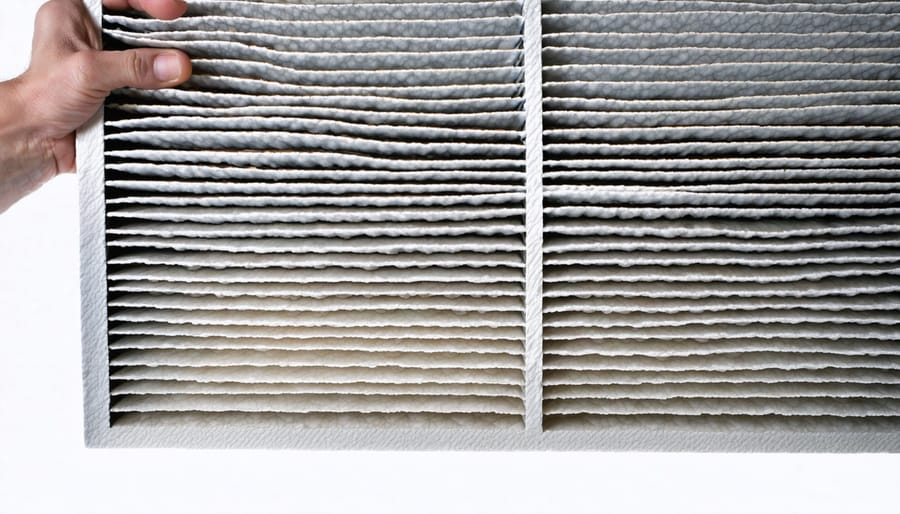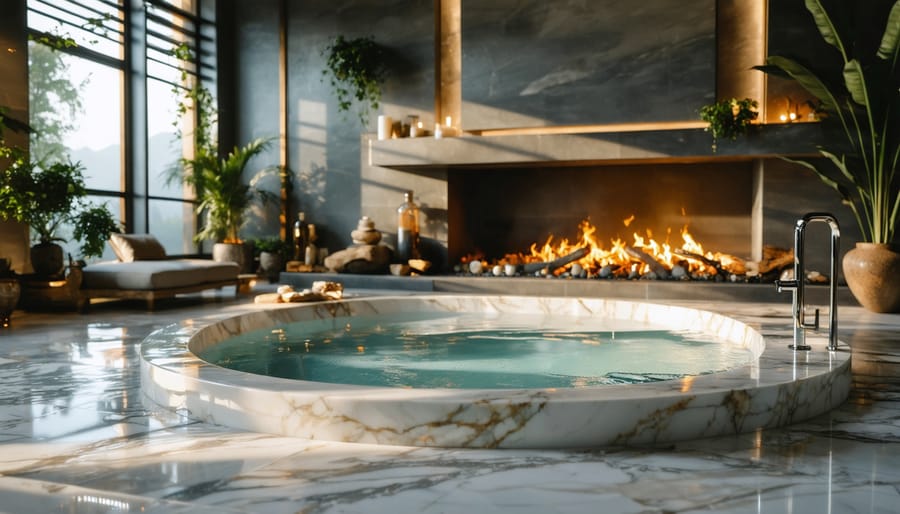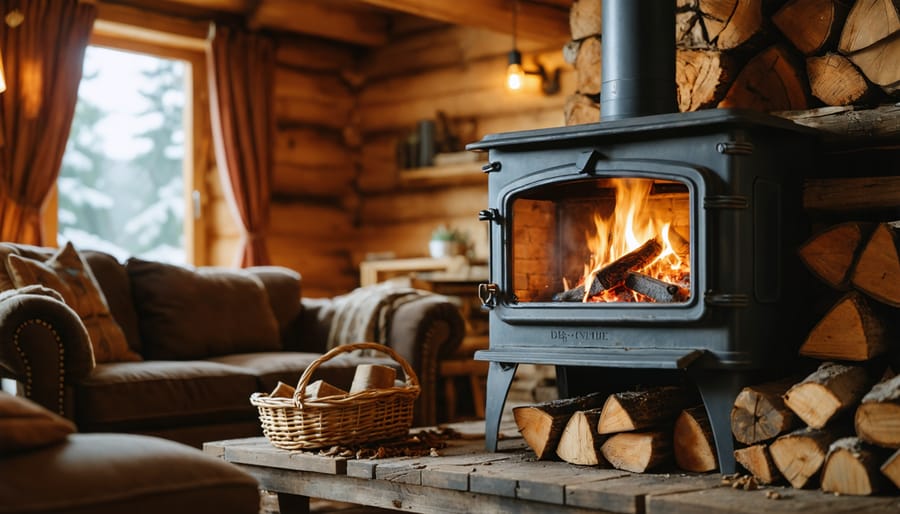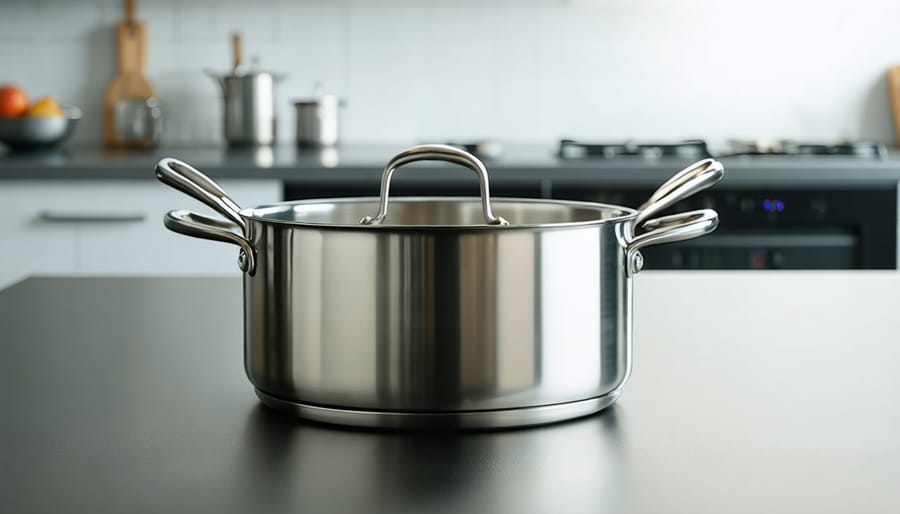Is your HVAC system struggling to maintain comfort, producing strange noises, or sending your energy bills through the roof? These could be telltale signs of a dirty air filter – a common yet often overlooked issue that affects millions of homes across America. A clogged HVAC filter doesn’t just reduce your system’s efficiency; it can lead to poor indoor air quality, respiratory issues, and expensive repairs if left unchecked. From unusual dust accumulation to uneven heating and cooling patterns, understanding the symptoms of a dirty filter can help you protect both your family’s health and your HVAC investment. Let’s explore the warning signs that indicate it’s time to replace your air filter, along with practical solutions to maintain optimal system performance and indoor air quality.
This introduction directly addresses homeowners’ concerns, establishes authority, and sets up the key points to be discussed while maintaining a warm, accessible tone that aligns with the writer’s profile and search intent.
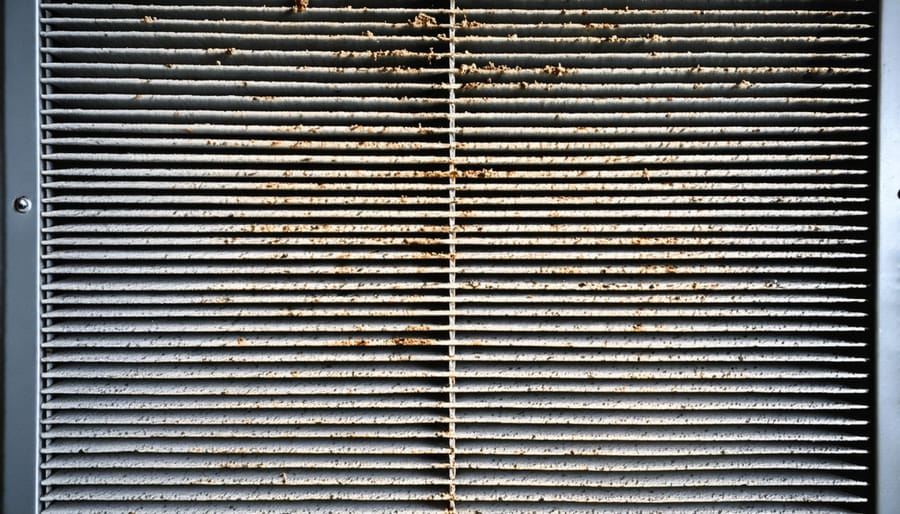
Common Signs of a Dirty HVAC Filter
Rising Energy Bills
A dirty HVAC filter forces your system to work much harder than necessary, leading to a noticeable spike in your energy bills. When airflow is restricted by dust and debris, your heating and cooling system must run longer and use more power to maintain your desired temperature. This inefficiency can increase your monthly utility costs by 5-15%. Think of it like trying to breathe through a stuffed nose – your system is essentially gasping for air, consuming excess energy in the process. The good news is that this is one of the easiest and most cost-effective HVAC issues to fix. Simply replacing your filter regularly can help restore your system’s efficiency and bring those energy bills back down to normal levels. For maximum savings, check your filter monthly and replace it at least every 90 days.
Poor Airflow and Temperature Issues
One of the most noticeable signs of a dirty HVAC filter is reduced airflow throughout your home. When dust and debris clog your filter, your system has to work harder to push air through, resulting in weak airflow from your vents. This restriction not only affects your system’s efficiency but also makes maintaining optimal indoor comfort more challenging.
You might notice certain rooms feeling too warm while others remain chilly, creating uncomfortable temperature inconsistencies throughout your home. These uneven heating and cooling patterns occur because your system struggles to distribute air properly through the clogged filter. The restricted airflow can cause your HVAC unit to run longer cycles in an attempt to reach the desired temperature, leading to increased energy consumption and higher utility bills.
Pay attention to whether you need to adjust your thermostat more frequently or if some rooms never seem to reach the right temperature. These are clear indicators that your filter might be due for replacement, preventing your system from performing at its best.
Visible Dust and Air Quality Problems
One of the most noticeable signs of a dirty HVAC filter is an increase in visible dust throughout your home. You might notice more dust settling on furniture, windowsills, and other surfaces shortly after cleaning. This isn’t just unsightly – it’s a clear indicator that your filter isn’t effectively trapping airborne particles.
Beyond visible dust, you may notice that family members are experiencing more frequent allergic reactions or respiratory issues. This happens because a clogged filter allows more allergens, pet dander, and other irritants to circulate freely through your home’s air. You might also detect a musty or stale odor, which occurs when dust and debris accumulate in your HVAC system.
Poor indoor air quality can manifest in other ways too. You might see more dust particles floating in sunbeams or notice that the air feels heavy and stuffy. Some homeowners report needing to dust and vacuum more frequently, or observe that their indoor plants collect dust more quickly than usual. These are all tell-tale signs that your HVAC filter needs attention to restore your home’s air quality to optimal levels.
Health and System Impact
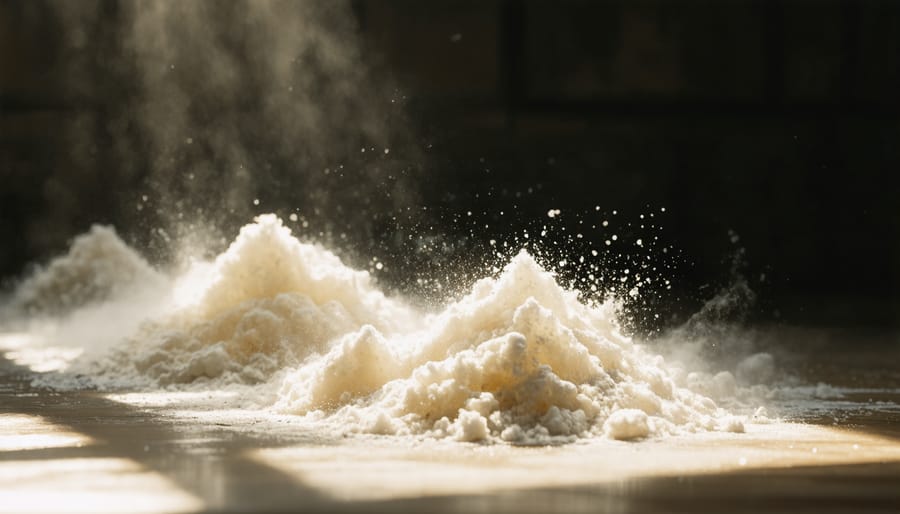
Respiratory Health Concerns
A dirty HVAC filter can significantly impact your respiratory health and overall well-being. When filters become clogged, they fail to trap harmful particles effectively, leading to serious indoor air quality issues throughout your home. People with allergies, asthma, or other respiratory conditions are particularly vulnerable to these effects.
Common respiratory symptoms associated with dirty HVAC filters include frequent sneezing, coughing, and throat irritation. You might notice increased difficulty breathing, especially during sleep, or experience more severe allergy symptoms than usual. Children, elderly family members, and pets may show these symptoms more prominently.
The accumulation of dust, pollen, pet dander, and other airborne particles can trigger asthma attacks and worsen existing respiratory conditions. Some people might develop headaches or experience unusual fatigue due to poor air quality. These symptoms often improve when spending time outside the home, only to return upon re-entering.
Long-term exposure to contaminated air from dirty filters can lead to chronic respiratory problems and increased susceptibility to respiratory infections. This makes regular filter maintenance not just a matter of system efficiency, but a crucial aspect of protecting your family’s health.
HVAC System Strain
A dirty HVAC filter creates unnecessary strain on your heating and cooling system, potentially leading to serious damage and costly repairs. When your filter is clogged with dust and debris, your HVAC system has to work harder to push air through the restricted space, similar to trying to breathe through a cloth pressed against your face.
This increased workload puts excessive stress on your system’s motor and other components. Your blower fan must run longer and work harder to maintain desired temperatures, consuming more energy and wearing out parts faster than normal. Over time, this added strain can lead to system overheating, component failure, or even complete system breakdown.
The restricted airflow can also cause your evaporator coil to freeze up in summer or your heat exchanger to crack in winter. These serious issues often result in expensive repairs or the need for complete system replacement. Additionally, when your system struggles to maintain proper airflow, it uses significantly more energy, leading to higher utility bills.
To protect your HVAC investment and ensure optimal performance, regularly check and replace your air filters according to manufacturer recommendations, typically every 1-3 months depending on usage and environmental conditions.
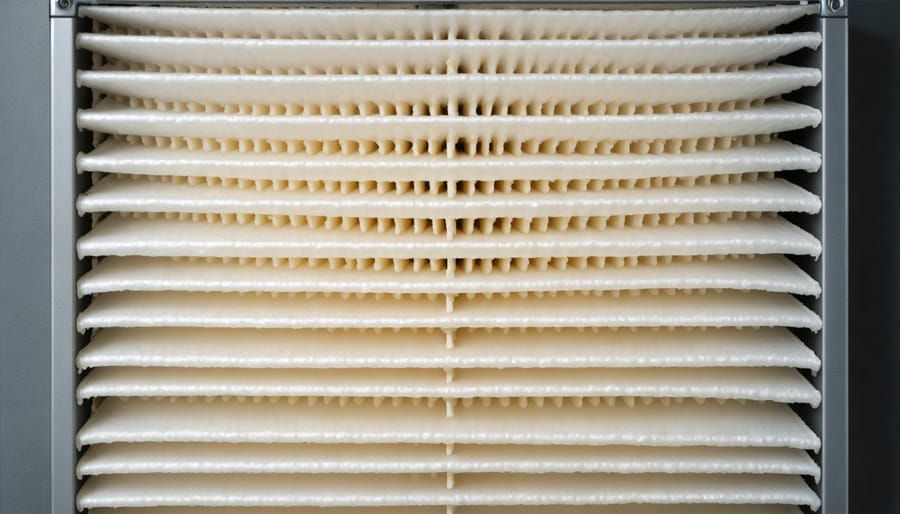
Prevention and Maintenance Solutions
Filter Replacement Schedule
Knowing when to replace your HVAC filters is crucial for maintaining optimal indoor air quality and system efficiency. While the general rule of thumb suggests changing filters every 90 days, several factors influence how frequently you should replace them:
For standard 1-inch filters in homes without pets or allergies, changing every 60-90 days is typically sufficient. However, if you have pets, you’ll want to replace filters every 30-60 days due to increased pet dander and fur accumulation.
Homes with multiple pets or family members with allergies or respiratory conditions should consider monthly filter changes. The same applies to urban areas with higher pollution levels or during peak pollen seasons.
The filter’s MERV rating also affects replacement frequency. Higher MERV-rated filters (11-13) typically need replacement every 60-90 days, while basic filters (MERV 1-4) might require monthly changes due to lower dust-holding capacity.
Consider these additional factors when planning your replacement schedule:
– Construction or renovation work nearby
– Seasonal changes (more frequent during heavy AC or heating use)
– Number of occupants in your home
– Running your system continuously versus occasionally
Remember to inspect your filter monthly, regardless of the scheduled replacement time. If it appears dark or dirty before the recommended change date, replace it early to maintain optimal system performance.
Choosing the Right Filter
Selecting the right filter for your HVAC system is crucial for maintaining optimal air quality and system performance. Start by checking your system’s manual for the recommended MERV (Minimum Efficiency Reporting Value) rating. Most residential systems work best with filters rated between MERV 8 and MERV 13.
Consider your specific needs when choosing a filter. If you have pets, allergies, or live in a dusty area, opt for filters with higher MERV ratings (11-13) to capture smaller particles. However, be cautious not to choose a filter that’s too dense for your system, as this can restrict airflow and strain your HVAC unit.
Fiberglass filters are the most basic and economical option but offer minimal protection. Pleated filters provide better filtration and are a popular middle-ground choice. For superior air quality, consider washable electrostatic filters or high-efficiency pleated filters, though these require a higher initial investment.
Always measure your filter slot carefully before purchasing, as incorrect sizing can lead to air bypass and reduced efficiency. Remember to check if your system requires a specific thickness, as using the wrong size can damage your HVAC unit.
Maintenance Best Practices
To keep your HVAC filter performing optimally, establish a regular maintenance schedule. Mark your calendar to check the filter monthly and replace it every 60-90 days, or more frequently if you have pets or live in a dusty area. When installing a new filter, ensure the arrows on its frame point toward the air handler, indicating proper airflow direction.
Keep the area around your HVAC unit clean and free of debris, as this can help reduce the amount of particles your filter needs to catch. Consider using a higher MERV-rated filter if you’re concerned about air quality, but always consult your HVAC manual first to ensure compatibility.
Store spare filters in a clean, dry place to prevent damage or contamination before use. During peak seasons (summer and winter), check your filter more frequently as your system works harder. Consider setting up recurring filter deliveries to ensure you always have replacements on hand.
Make filter inspection part of your regular home maintenance routine, and you’ll enjoy better air quality and more efficient heating and cooling year-round.
A dirty HVAC filter can significantly impact your home’s air quality, energy efficiency, and system performance. By staying alert to the warning signs we’ve discussed – from reduced airflow and increased energy bills to excessive dust and frequent system cycling – you can catch filter problems early. Remember that regular filter maintenance is one of the simplest yet most effective ways to protect your HVAC investment and maintain a healthy indoor environment. Make checking and replacing your filter part of your monthly home maintenance routine, and don’t hesitate to replace it more frequently during high-use seasons or if you have pets. Taking these proactive steps will help ensure your HVAC system runs efficiently, extends its lifespan, and keeps your home comfortable year-round.
